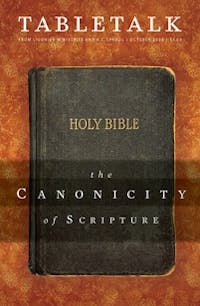
Request your free, three-month trial to Tabletalk magazine. You’ll receive the print issue monthly and gain immediate digital access to decades of archives. This trial is risk-free. No credit card required.
Try Tabletalk NowAlready receive Tabletalk magazine every month?
Verify your email address to gain unlimited access.
There are a very small number of books other than the Bible that have affected the course of history. One thinks immediately of books such as Nicholas Copernicus’ Revolutions of the Heavenly Bodies, Isaac Newton’s Principia Mathematica, Charles Darwin’s Origin of the Species, Immanuel Kant’s Critique of Pure Reason, Karl Marx’s Das Kapital, or Albert Einstein’s Relativity. There are also a small number of books that have profoundly influenced the history and thought of the church. One might think, for example, of Augustine’s City of God, Thomas Aquinas’ Summa Theologica, or Karl Barth’s Church Dogmatics. Among the few books that have shaped the course not only of church history but also of world history is John Calvin’s Institutes of the Christian Religion.
The first Latin edition of the Institutes was published in 1536, when Calvin was only in his late twenties. This first edition consisted of six chapters. A fully revised edition consisting of seventeen chapters appeared in 1539. While the first edition was viewed by its author as a compendium of doctrine and a confession of faith, the revised edition was intended as a theological textbook to be used in the training of candidates for the ministry. Calvin revised his work again in 1543, adding four chapters to the new edition. A fourth edition appeared in 1550, but it contained only minor revisions, the most significant of which was the numbering of the paragraph divisions. Finally, in 1559, the fifth and final edition of Calvin’s Institutes was published. This edition is substantially larger than its predecessor, containing 80 chapters. This definitive edition has been translated into many languages over the last 450 years. The standard English translation since 1960 has been that of Ford Lewis Battles. His translation was edited by John T. McNeill and published in the Library of Christian Classics.
John Calvin’s Institutes is, essentially, the first Reformed “systematic theology.” Its influence on the thought of all subsequent Reformed theology is immeasurable. The work is divided into four major sections or “Books.” Book One concerns the knowledge of God the Creator. In this Book, Calvin discusses God, Scripture, and man’s knowledge of God and of himself. Book Two concerns God the Redeemer in Christ. Here Calvin explains, among other things, the biblical doctrine of the fall, the Law, the incarnation, and the atonement. Book Three concerns the way in which we receive the grace of Christ. In this section Calvin discusses faith, justification, the Christian life, and more. Finally, Book Four concerns the external means by which God invites us into the church. Here, Calvin covers subjects related the church, the sacraments, and the civil magistrate.
Contrary to the portrayals of Calvin that one often finds in contemporary books and articles, Calvin was not a dry academic scholar. Such caricatures are evident the moment one takes the time to read his works. Calvin has a passion to see God glorified and Jesus Christ exalted, and this passion shines throughout the Institutes. Even those Christians who cannot read the entire work should take the time to read at least Book Three, chapters 6–10. The wisdom contained therein for the Christian’s daily walk with Christ is truly profound.
It is unfortunate, but many contemporary Christians who consider themselves “Reformed” or “Calvinist” have never read any part of this classic Christian work. Admittedly, the Institutes can be an intimidating work. The standard English translation, for example, consists of two large hardback volumes, and the text, not including introductions and indexes, itself fills 1,521 pages. It is easy when looking at a book of that size to pass it up in favor of something shorter and less difficult. However, many things that are worthwhile are difficult, and those who do pass up this work because of its size are missing the opportunity to sit at the feet of one of the church’s great teachers.
Completing the book is actually not as difficult as one would imagine at first glance. Each of the eighty chapters is divided into smaller sections, which average a little over one page in length. If a person reads four of these subsections (4–5 pages) per day, every day, he will complete the entire work in less than a year. Read two per day, and he will finish the book in less than two years. Such a reading schedule is actually helpful because it will give the reader time to contemplate what he has read each day. There are great Christian works, and then there are true classics. The Institutes is a true classic that we should all take up and read.
